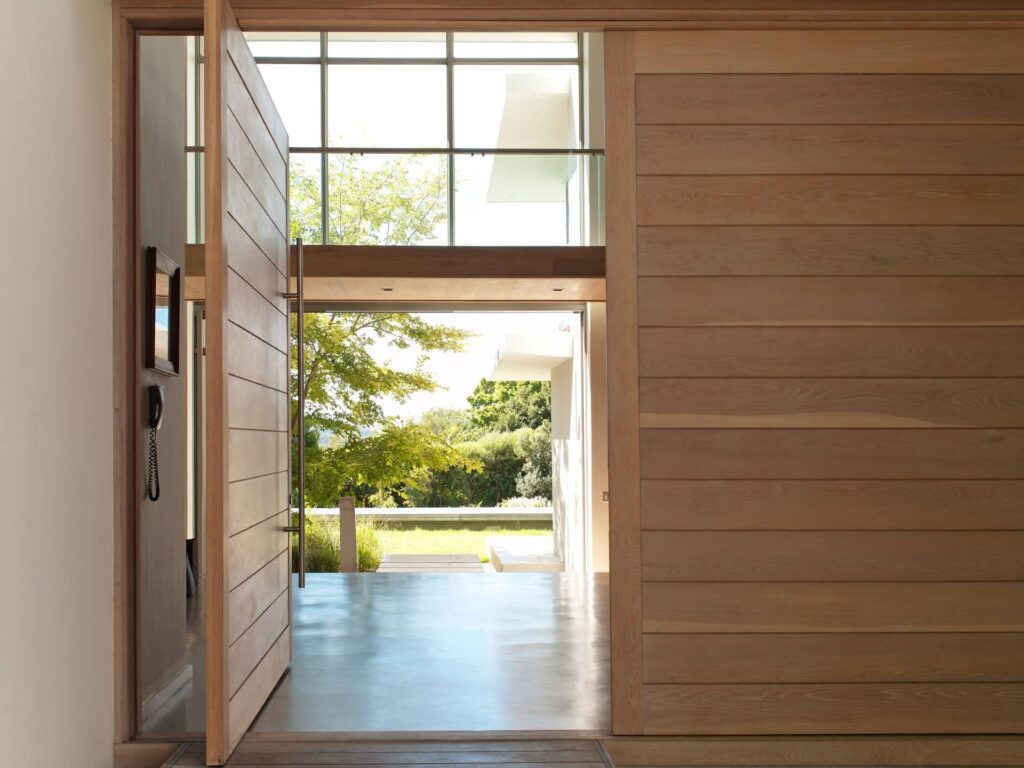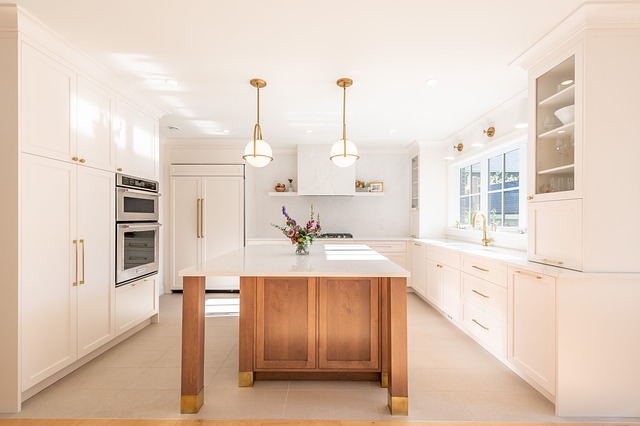Considering attached ADUs for extra income can be a game-changer for young professionals. While traditional rental properties come with their challenges, attached ADUs offer a convenient and cost-effective way to generate additional revenue. By leveraging existing space on their property, young professionals can tap into a lucrative income stream without the need for a separate investment. The flexibility and financial benefits of attached ADUs make them a compelling option for those looking to boost their earnings effortlessly.
Understanding Attached ADUs
Definition
Attached Accessory Dwelling Units (ADUs), commonly known as basement ADUs or internal ADUs, are secondary housing units located within or attached to a primary residence. They offer young professionals the opportunity to generate extra income by renting out these additional living spaces.
Features and Designs
Attached ADUs can take various forms, such as converted basements, garage apartments, or additions to the main house. They typically have separate entrances, kitchens, bathrooms, and living areas, providing tenants with privacy while still being connected to the main property.
Popularity Among Young Professionals
Young professionals are increasingly turning to attached ADUs as a means of supplementing their income due to rising housing costs and the desire for flexible living arrangements. These units offer a way to offset mortgage payments or expenses while allowing homeowners to maintain close proximity to their primary residence.
Pros of Attached ADUs:
- Provide a source of passive income.
- Increase property value.
- Encourage sustainable land use by utilizing existing structures.
Cons of Attached ADUs:
- Initial setup costs can be high.
- Zoning regulations may restrict their construction in certain areas.
Financial Benefits of Attached ADUs
Rental Income
Renting out an attached ADU presents the potential for steady rental income. Young professionals can leverage this additional source of revenue to supplement their primary income. By offering the ADU for rent, individuals can ensure a consistent flow of funds that can contribute significantly to their financial stability.
Alleviating Financial Burdens
Renting out an ADU can help alleviate financial burdens faced by young professionals, such as high mortgage payments. The rental income generated from the attached unit can be used to cover mortgage costs, reducing the overall financial strain on homeowners. This additional income stream provides a sense of security and peace of mind.
Tax Benefits and Incentives
Homeowners with attached accessory dwelling units may be eligible for various tax benefits and incentives. These incentives are designed to encourage the creation of ADUs and provide financial relief to homeowners. By taking advantage of these benefits, young professionals can maximize their savings and improve their overall financial well-being.
Enhancing Property Value with ADUs
Increased Property Value
Adding an ADU to your property can significantly increase property value. Studies show that homes with ADUs tend to have higher resale values compared to those without. This increase in value is due to the potential rental income or the flexibility it offers for multigenerational living.
Furthermore, the flexibility of having an ADU can attract a wider range of buyers when selling a property. Potential buyers may see the added unit as an opportunity for rental income or as a space for extended family members.
Market Trends and Resale Values
Market trends indicate a growing demand for properties with ADUs, leading to higher resale values. Real estate experts suggest that the presence of an ADU can make a property more attractive to buyers, resulting in quicker sales and potentially higher offers.
In regions where housing inventory is limited, properties with ADUs are particularly sought after. The additional dwelling unit not only provides extra living space but also increases the overall value of the property, making it a sound investment choice for homeowners.
Flexibility and Multi-Use Spaces
Versatile Living Arrangements
Attached ADUs offer flexible housing options suitable for various living arrangements. Whether accommodating elderly parents, renting out for extra income, or providing a separate space for adult children, ADUs cater to diverse needs. ADUs serve as affordable living spaces that can adapt to changing family dynamics and lifestyles. Their versatility makes them ideal for multigenerational housing, addressing the increasing demand for housing flexibility.
Home Office or Studio Space
Consider transforming an ADU into a functional home office or studio space. With the rise of remote work, having a dedicated workspace at home is crucial. An attached ADU provides a private area away from the main house, enhancing productivity and work-life balance. The option to convert an ADU into a studio allows individuals to pursue creative endeavors or hobbies without disrupting the household. This additional space fosters innovation and personal growth.
Customization for Personal Needs
ADUs offer the freedom to customize according to personal lifestyle preferences. From choosing the layout and design to selecting amenities, individuals can tailor their ADU to suit their specific needs. Customizing an attached ADU enables young professionals to create a space that reflects their personality and enhances daily living. Whether adding eco-friendly features, creating a cozy retreat, or incorporating smart technology, customization adds value and comfort.
Cost Considerations for Building ADUs
Initial Investment for Building Attached ADUs
Building an attached Accessory Dwelling Unit (ADU) requires a significant initial investment. Factors such as size, materials, and labor costs can influence the total expense. Homeowners should budget for permits, design fees, construction costs, and utility connections.
When considering the initial investment for an attached ADU, it’s crucial to obtain accurate cost estimates from multiple contractors to ensure transparency and avoid unexpected expenses. Moreover, researching local building codes and regulations can help in planning for the financial aspect of constructing an ADU.
Cost Comparison: Building an ADU vs. Moving to a Larger Home
Comparing the costs of building an ADU versus moving to a larger home can provide young professionals with valuable insights. Building an ADU is generally more cost-effective than purchasing a new property or upgrading to a larger house. The expenses associated with selling a current home and buying a new one can be substantial, including real estate agent fees, closing costs, and moving expenses.
By opting to build an ADU, young professionals can maximize their existing space without the hassle of relocating. The rental income generated from an ADU can offset some of the construction costs over time, making it a financially savvy decision for individuals looking to increase their income streams.
Financing Options for Young Professionals Considering ADUs
For young professionals interested in building attached ADUs, various financing options are available to support this endeavor. Home equity loans or lines of credit are common choices for funding ADU construction projects. These options allow homeowners to leverage the equity in their property to finance the building process.
Another financing option is construction loans, specifically designed for home improvement projects like constructing an ADU. These loans typically have favorable terms and can provide young professionals with the necessary funds to build an attached ADU on their property.
Pros of Financing Options:
- Access to additional funds for construction.
- Ability to leverage existing home equity.
- Favorable terms compared to traditional loans.
Cons of Financing Options:
- Potential increase in debt obligations.
- Interest payments over the loan term.
Navigating Zoning and Regulations
Checking Zoning Laws
When considering building an attached ADU for extra income, it is crucial to check local zoning laws. These laws dictate where ADUs can be built, the size limitations, and other regulations. Failure to comply can result in fines or even demolition.
It’s essential to research the specific zoning regulations in your area. Some cities have strict rules on ADUs, while others are more lenient. Contacting the local planning department or a zoning consultant can provide valuable information on what is allowed in your neighborhood.
Finding Information on Regulations
To navigate the complex world of zoning and regulations, young professionals should start by visiting their city’s official website. Look for information on ADUs, including permit requirements, size restrictions, and setback regulations. Attending local planning meetings or workshops can offer insights into the latest zoning changes.
Young professionals can also seek guidance from home builders or remodeling experts experienced in ADU construction. These professionals can provide valuable advice on navigating zoning laws and obtaining necessary permits for building an attached ADU.
Challenges in Obtaining Permits
Obtaining permits for an attached ADU can pose challenges due to the varying regulations across different jurisdictions. Common hurdles include meeting size requirements, parking restrictions, and neighborhood opposition. To address these challenges, it’s crucial to engage with the local community, communicate openly with neighbors about the project, and work closely with city officials to ensure compliance.
In some cases, hiring a permit expediter or consulting with an architect familiar with ADU regulations can streamline the permitting process. These professionals can help navigate the paperwork, ensure all requirements are met, and increase the chances of permit approval.
Environmental Advantages of ADUs
Reduced Footprint
Building an ADU offers environmental advantages by reducing the overall environmental footprint compared to constructing new homes. The materials required for an ADU are typically less than those needed for a standalone house, thereby decreasing the carbon emissions associated with construction. This sustainable approach aligns with the growing emphasis on eco-friendly living practices.
Sustainable Urban Living
ADUs promote sustainable living in urban areas by utilizing existing infrastructure more efficiently. By repurposing underutilized spaces within urban settings, ADUs contribute to denser and more walkable neighborhoods. This not only reduces the need for sprawling developments but also encourages a sense of community and connectivity among residents.
Energy Efficiency Options
Incorporating energy-efficient options into ADU designs further enhances their environmental benefits. Features such as solar panels, energy-efficient appliances, and proper insulation can significantly reduce energy consumption and lower utility costs for both the primary residence and the ADU. These measures not only benefit the environment but also offer financial savings for homeowners.
Community and Social Benefits
Foster Connections
ADUs not only provide additional income for homeowners but also foster community connections by housing friends or family members. This arrangement allows for closer relationships and support networks within neighborhoods.
Creating a space for loved ones within the same property can enhance social interactions and strengthen bonds between neighbors. By having friends or family members living in an ADU, individuals can easily access support systems and build a sense of community.
Neighborhood Diversity
The integration of ADUs in residential areas can contribute to increased neighborhood diversity. By accommodating a variety of residents, including young professionals, students, or elderly individuals, neighborhoods become more vibrant and inclusive.
Diverse communities offer unique perspectives, cultures, and experiences that enrich the overall living environment. This mix of demographics fosters a sense of belonging and unity among residents, creating a dynamic and welcoming neighborhood.
Addressing Housing Shortages
ADUs play a crucial role in addressing housing shortages, especially in urban areas facing housing challenges. By utilizing existing properties to create additional living spaces, ADUs help increase the supply of affordable housing options.
In densely populated cities where housing affordability is a pressing issue, ADUs offer a practical solution to accommodate more residents. These units provide opportunities for individuals seeking affordable housing options while maximizing land use efficiency.
Real-Life Success Stories
Testimonials
Young professionals across the country are embracing attached ADUs as a lucrative source of extra income. For instance, Sarah, a marketing executive, shared how building an ADU in her backyard was the right choice. She now earns $1,000 monthly by renting it out on popular platforms like Airbnb.
Financial Gains
The financial benefits of ADU rentals are undeniable. John, a software developer, saw a significant increase in his monthly earnings after converting his garage into an ADU. He now generates an additional $1,500 per month, helping him achieve his financial goals sooner.
Pros:
- Supplemental income stream
- Property value appreciation
Cons:
- Initial investment required
- Maintenance costs
Creative Uses
Apart from financial gains, ADUs have brought about positive changes in homeowners’ lives through creative uses. Emily, a young architect, transformed her detached garage into a cozy studio where she now hosts art workshops. This not only provides her with extra income but also fulfills her passion for community engagement.
Final Remarks
Considering attached ADUs for extra income can be a lucrative opportunity for young professionals like you. From financial gains to property value enhancement, the benefits are substantial. The flexibility of these spaces, coupled with cost considerations and environmental advantages, make them a smart investment. Navigating zoning regulations might seem daunting, but the long-term community and social benefits are worth the effort. Real-life success stories further highlight the positive impact attached ADUs can have on your financial portfolio and lifestyle. Don’t miss out on this chance to secure your financial future while contributing to sustainable living practices in your community.

Maximize Your Property with Attached ADUs by Red White & Blue Construction!
Are you considering an attached ADU in Lafayette, CA? Look no further than Red White & Blue Construction, your trusted ADU specialists! Transform your property with a custom attached ADU that caters to your changing lifestyle needs. Renowned for our expertise in ADU projects, we’re here to turn your ideas into reality, be it a cozy extension to your home, a stylish in-law suite, or a functional home office. Our proven track record in the Bay Area stands as a testament to our commitment, craftsmanship, and the exceptional standards we uphold in every undertaking.
At Red White & Blue Construction, we’re more than just builders; we’re architects of your ideal living solution. With our transparent pricing and exceptional client service, you’re not just adding an ADU; you’re investing in a versatile, value-adding extension of your home. Choose Red White & Blue Construction for your ADU project. Embark on a journey of Property Enhancement Excellence and contact us today!
Disclaimer
The materials available on this website are for informational and entertainment purposes only and not to provide advice. You should obtain advice concerning any particular issue or problem from a professional. You should not act or refrain from acting based on any content included in this site without seeking legal or other professional advice. The information presented on this website may reflect only some of the current building developments. No action should be taken in reliance on the information on this website. We disclaim all liability concerning actions taken or not taken based on any or all of the contents of this site to the fullest extent permitted by law.





